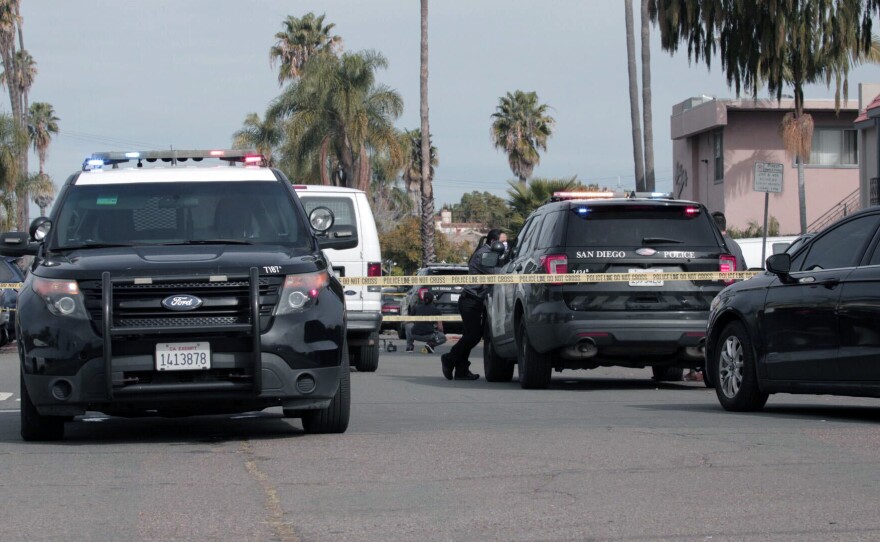Violent crime in San Diego increased during 2020, but not by nearly as much as it did in some other large cities, data released Tuesday by the San Diego Police Department show.
Overall, the city saw a 1.7% increase in violent crime between 2019 and 2020, with murders going from 50 in 2019 to 55 in 2020. Meanwhile, aggravated assaults were up by 8% and robberies and rapes were slightly down, according to the data presented to the San Diego City Council.
The city’s overall crime rate dropped by 8%, driven largely by reductions in thefts and burglaries.
Southeast San Diego had more murders than any other area of the city, according to the presentation. Ten of the murders in Southeast San Diego were associated with gangs and five with domestic or family violence.
Other cities in the county experienced similar trends, according to crime records obtained by KPBS. Violent crimes increased by between 1% and 50% from 2019 to 2020 in Oceanside, Coronado, Escondido, La Mesa and Chula Vista. Every city except Coronado, which had no murders in 2019 or 2020, saw an increase in murders during 2020.
Overall violent crime was down in Carlsbad by 7% and National City by 4%. Other cities in the county have yet to provide their 2020 crime data to KPBS.
The crime story in San Diego is far different from many other large metro areas, which saw considerable spikes in their murder rates, according to FBI data.
RELATED: Massive 1-Year Rise In Homicide Rates Collided With The Pandemic In 2020
Consider that by the end of 2020 murders in Chicago jumped more than 50%, while Los Angeles and New York saw increases of 30% and 40%, respectively. The average increase for cities with more than 1 million people was 29% through the end of September 2020, the FBI data show.
One San Diego resident who watched the City Council presentation questioned the accuracy of the police department’s numbers and wanted more transparency in how the statistics were collected.
“That’s the way that we’re going to be able to build a bridge of trust back from the community to the police station,” said Francine Maxwell, who lives in City Council District 4, which covers Lincoln Park and Oak Park.
Adina Watey, a resident of District 3, which covers downtown San Diego, said that the decreasing crimes citywide should be taken into consideration when determining the next police budget.
RELATED: City Leaders Begin ‘No Shots Fired’ Program To Reduce Gun Violence
“The police department’s budget has been increasing at a higher rate than any other department in the city, and yet these crime rates are minor changes, it seems like practically stagnant,” Watey said. “I hope that as we go into this budget cycle, you continue to think about what things you can do to prevent crime that does not involve adding more officers on the streets.”
Those comments were echoed by Councilman Sean Elo-Rivera, who represents areas such as City Heights. He said he would like to see more investment in childhood programs that can help prevent crime in the long term.
“Holistically thinking about taking care of our community, loving our community, providing opportunity and hope will make a safer community here in San Diego for everyone,” Elo-Rivera said. “Hope that we can lean into those efforts just as much as the more direct ways that we deal with interrupting criminal activity.”







